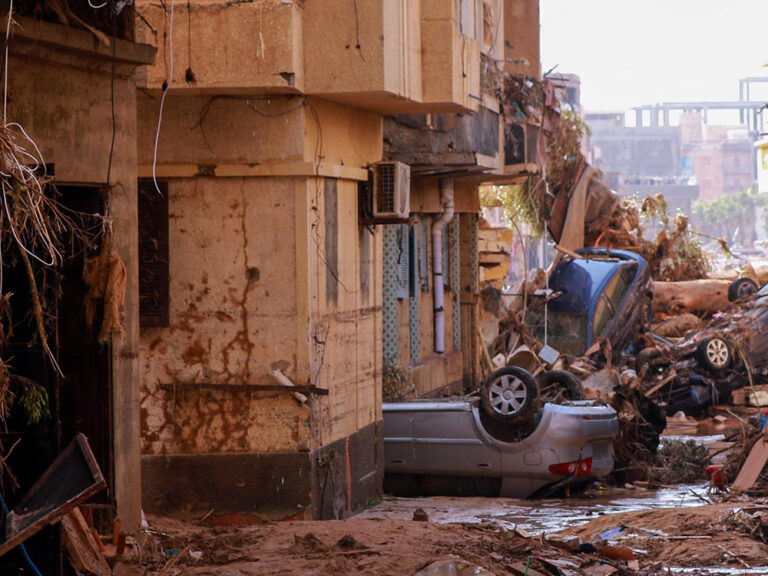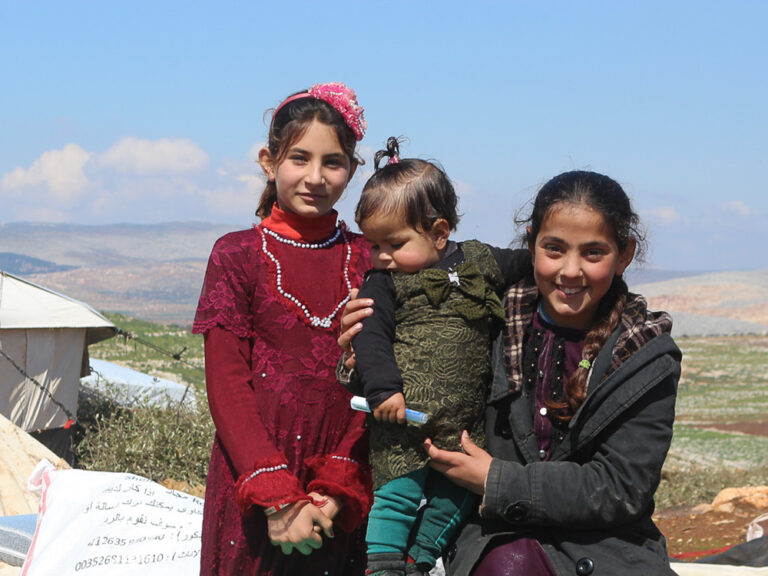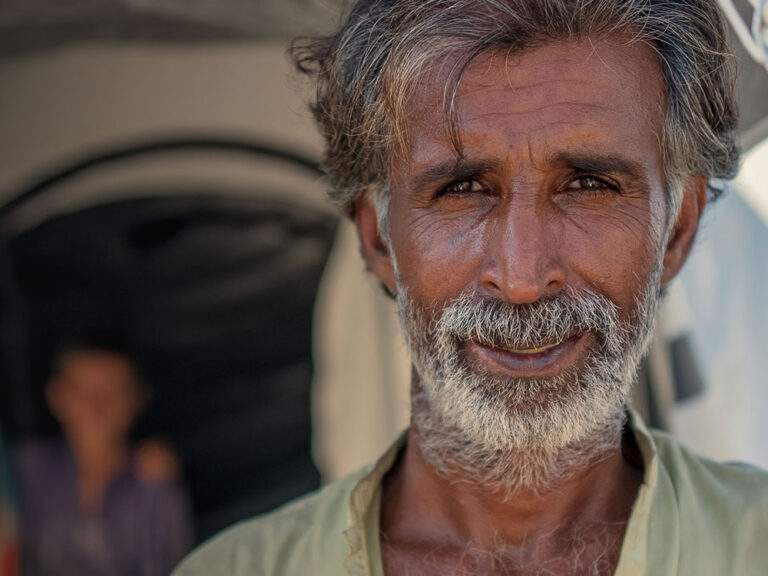Severe flooding affected Libya, particularly in the city of Derna after dams burst. Thousands of people lost their lives. Others lost everything they owned in the floods.
Discover more about the Libya floods and how ShelterBox helped.
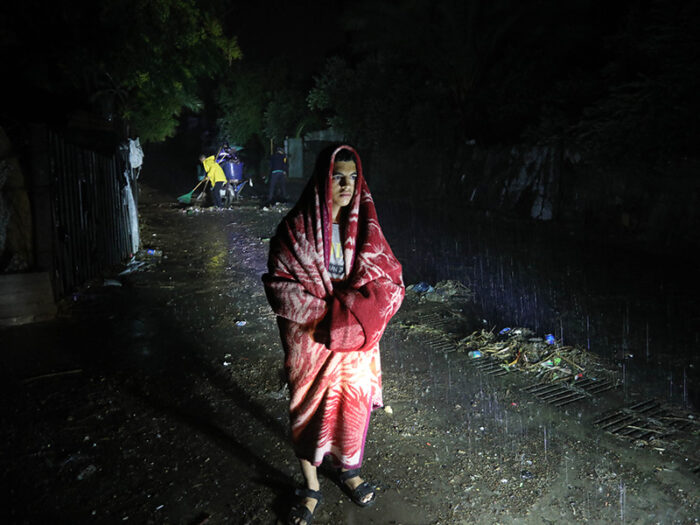

What happened in Libya?
On Sunday 10th September 2023 a severe storm made landfall on the north-east coast of Libya. Storm Daniel brought over 400mm of rain in 24 hours, in a region that typically only receives 1.5mm rain in the whole of September. The rainfall caused two dams to burst on the normally dry Wadi Derna riverbed. This unleashed a torrent of water through the city of Derna, washing away entire neighbourhoods.
Thousands of people died in the flooding, and thousands more were recorded as missing. The IFRC estimated that over 40,000 people were displaced across north-east Libya.
People whose homes were lost or damaged were sheltering together in school buildings. Many then moved to stay with host families or to other communal accommodation.
The flooding occurred just before Libya’s wet season, with winter following. Temperatures in Derna can drop to as low as 1°C in the winter. This posed an extra risk to life for people without adequate shelter.
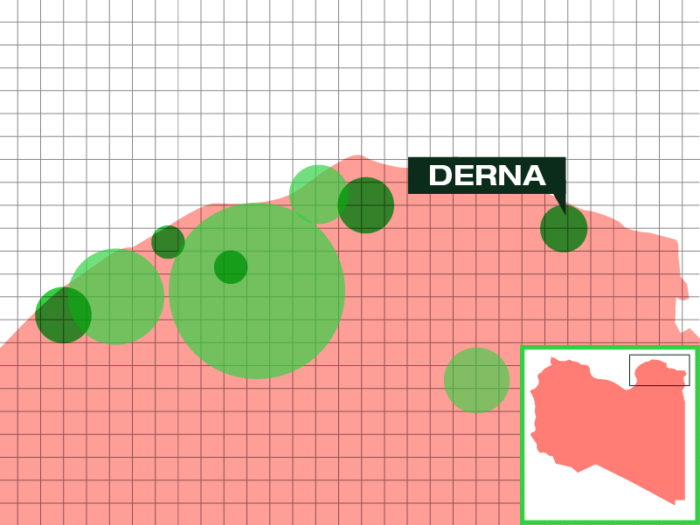
Where is Libya?
Libya is in north Africa.
The north coast borders the Mediterranean Sea. To the east of Libya lies Egypt and Sudan. To the south are Chad and Niger, and to the west Algeria and Tunisia.
Much of Libya is covered by desert. Towns and cities on the north coast experience a more Mediterranean like climate.
Severe flooding like that brought about by Storm Daniel is very rare in Libya. However scientists have said that climate change has made such severe storms far more likely.
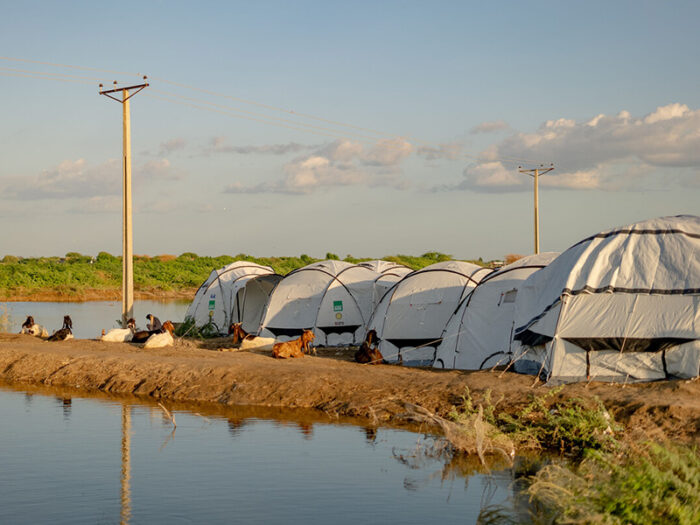

Had ShelterBox responded in Libya before?
ShelterBox previously responded in Libya. In 2011 we partnered with the Agency for Technical Cooperation and Development (ACTED) and the Libyan Red Crescent Society to deliver aid to people affected by civil unrest.
We once again worked with partners for our recent response in the country.
ShelterBox has significant experience responding to severe flooding around the world, including in Pakistan (2022), India (2020), Paraguay (2019), and Kenya (2018).
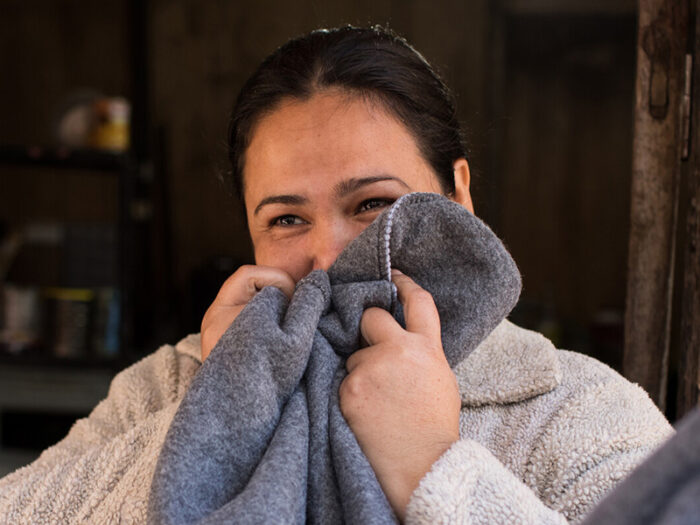

How did ShelterBox help?
ShelterBox worked with our partner ACTED in Libya. Together, we supported people in Derna – the area worst affected by the flooding. We supported communities who lost their homes and belongings to flood water, with a focus on items that would help keep people warm.
As access to Libya for foreign nationals is challenging, we planned together with ACTED, and provided them with a grant for this response. With the grant, ACTED, which was already working in Derna before these floods, sourced aid items locally and distributed them to people who need it most.
We provided winter clothing, thermal blankets, and heaters so people could protect themselves and their families from the cold. Kitchen sets, with cooking pots and cutlery, meant people could heat water, and cook food to keep warm. We also provided basic but essential items like toothbrushes, sanitary pads, and soap. Aid distributions are now complete.
Flooding in Libya – key facts
The north-east coast of Libya was affected by extremely heavy rainfall. This brought flash flooding in several cities and communities in this area of the country.
The city of Derna was particularly badly affected as the rainfall caused two dams to burst. As a result the city was engulfed in a torrent of water compared to a tsunami due to its suddenness and strength.
Storm Daniel reached Libya on Sunday 10th September 2023. The heavy rainfall caused two dams to burst in the city of Derna that night.
Due to the amount of damage to infrastructure, it took some time for the full details of the scale of damage and the loss of life to be shared.
The flooding was caused by Storm Daniel. This was a type of storm known as a medicane – a severe storm on the Mediterranean compared to a hurricane. Storm Daniel formed in Greece and caused record breaking rainfall there on 5th and 6th September. It then moved south towards Libya.
Storm Daniel caused over 400mm of rain to fall on north-east Libya in 24 hours. That’s over 200 times more rain than this area would expect to get in the entire month in September. The rain caused flash flooding and mudslides.
Communities along the north-east coast of Libya were affected by flooding and mudslides. The city of Derna was particularly badly hit as the rainfall caused two dams in a normally dry riverbed through the city to burst.
This unleashed a torrent of water which engulfed swathes of the city. Onlookers described the water as being like a tsunami. Scientists have estimated that millions of tons of water would have been released. It swept away people, vehicles and buildings in its path.
A lot of infrastructure was also damaged in the flooding. Thousands of people were known to have been killed. Many more were declared missing. There were concerns about contaminated water supplies due to bodies still in the water.
As well as the staggering loss of life, the IFRC estimated that over 40,000 people were displaced. They lacked basic necessities such as food, clean water, medicine, and shelter.
Storm Daniel cannot be specifically linked to climate change. However many scientists believe that the climate crisis is making such severe storms more likely.
As such it is possible that we will see more devastating storms as our planet continues to warm up. You can learn more about the link between disasters and climate change here.
Extreme weather events such as Storm Daniel are a part of the world’s climate. However, it is the decisions that humans make that can decide whether such an event becomes a disaster.
In the case of Libya, some are pointing to the political turmoil in the country as a factor in the scale of the devastation from the floods. Since the fall of Col Gaddafi’s regime in 2011 the country has been split into two rival governments. Fighting has been taking place between militias. As a result the focus has not been on maintaining infrastructure.
The devastating flooding in Libya is another example of how disasters are not natural. Learn more here.
When giving to ShelterBox you are contributing to a general donation fund.
Your support today will contribute to part of our General Fund. We believe that the best way for us to be impactful is by staying flexible, and it is essential that we have funds available to support those affected by disasters around the world.

